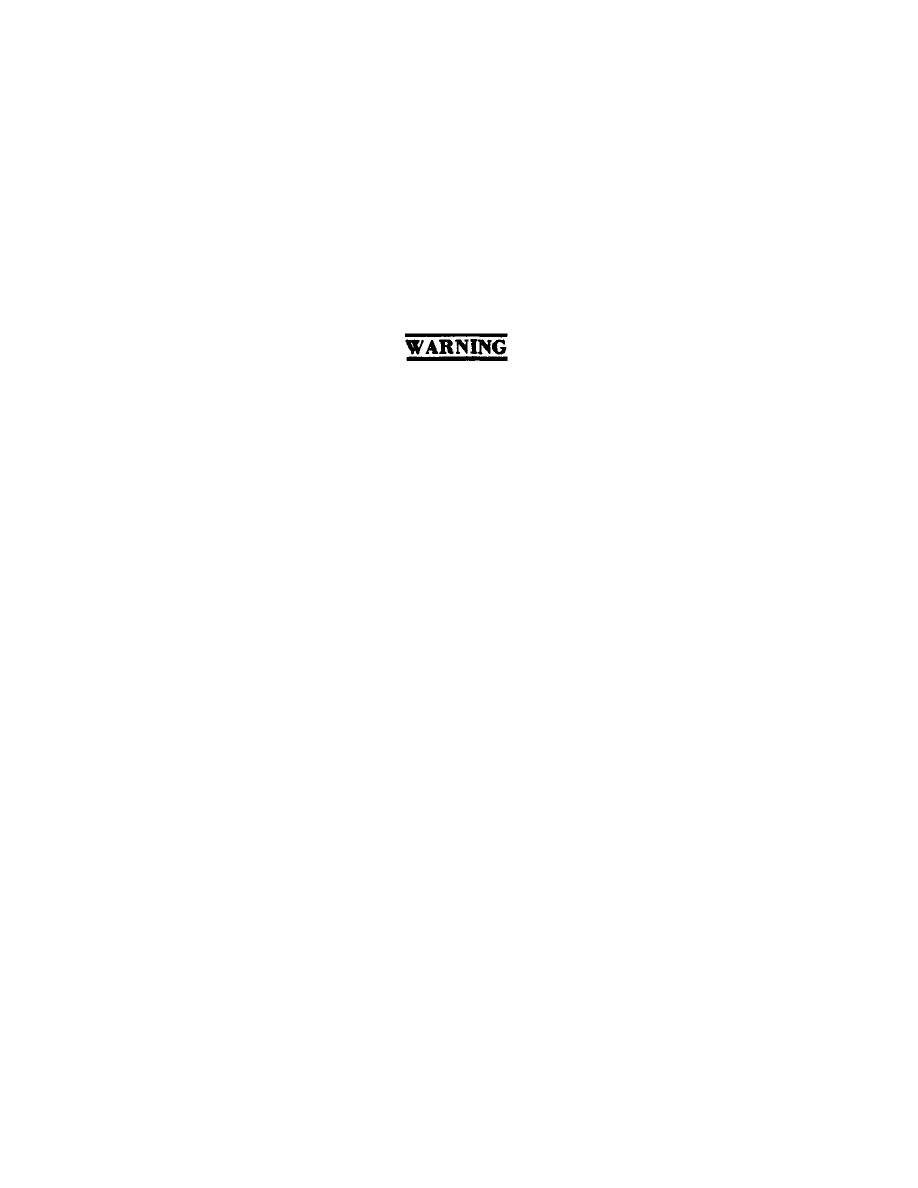 |
|||
|
|
|||
|
|
|||
| ||||||||||
|
|
 TM 9-2320-269-34-1
CLEANING - CONTINUED
Clean inner and outer surfaces of metallic parts that get greasy and oily with drycleaning solvent, Type II (SD-2) Fed Spec
PD-680. Clean out sludge and gummy deposits on metal parts with a stiff brush and drycleaning solvents. Small metal
parts should be placed in a wire mesh basket before immersing them in drycleaning solvent. For stubborn grease and dirt
buildup on metal parts, steam clean. Clean off rust with a wire brush or abrasive cloth, then clean again In drycleaning
solvent.
Dry metal parts with clean, dry rags.
Use clean, soapy water to clean rubber or plastic parts. Do not use solvent. Dry parts with clean, dry rags.
Be sure to wear safety goggles or lenses when using compressed air. Compressed air and particles
moved by compressed air can cause damage to your eyes.
Use a clean rag dampened in drycleaning solvent to clean metal parts for electrical components. Do not dip electrical
parts or components in solvent. Clean rust off electrical connectors with small wire brush or abrasive cloth. Use low-
pressure compressed air to blow away rust particles on electrical parts. Clean off solder with soldering iron.
Delicate engine parts and parts for the hydraulic system must be cleaned and dried with special care so that metal or fiber
particles cannot contaminate engine or hydraulic fluid.
Do not clean bearings in drycleaning solvent. Refer to TM 9-214 for procedures for cleaning and inspecting antifriction
After cleaning, cover parts to protect from dust and dirt.
Additional information on cleaning procedures can be found in these manuals:
TM 9-247 - Materials for Cleaning, Preserving, Abrading, and Cementing Ordnance Materiel and Related Materials,
including Chemicals.
TB 750-1047 - Elimination of Combustibles from Interiors and Metal or Plastic Gasoline and Diesel Fuel Tanks.
INSPECTION
The reason for parts inspection is to find out which parts can be used and which must be replaced.
Specifications and tolerances are given in this manual, but sometimes you, the inspector, must decide which parts should
be replaced.
To find out If you can use a part that is otherwise In good condition, check the clearance between mating surfaces. If
clearance Is within given tolerance, reinstall the part.
Look carefully at machined surfaces and polished areas. Use a bright light to shine across surfaces to check for score
marks, cracks, breaks, and excessive wear.
Inspect gears for cracked, nicked, and chipped teeth. Look for metal-to-metal abrasion, pitting, and wear. When a gear Is
found to be defective, replace It and mating gear.
2-47
|
|
Privacy Statement - Press Release - Copyright Information. - Contact Us |